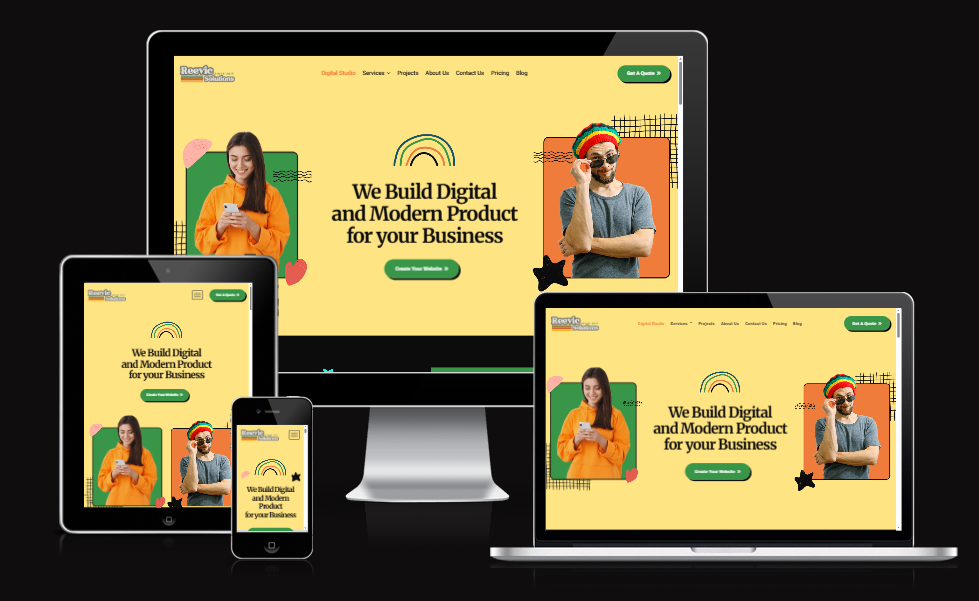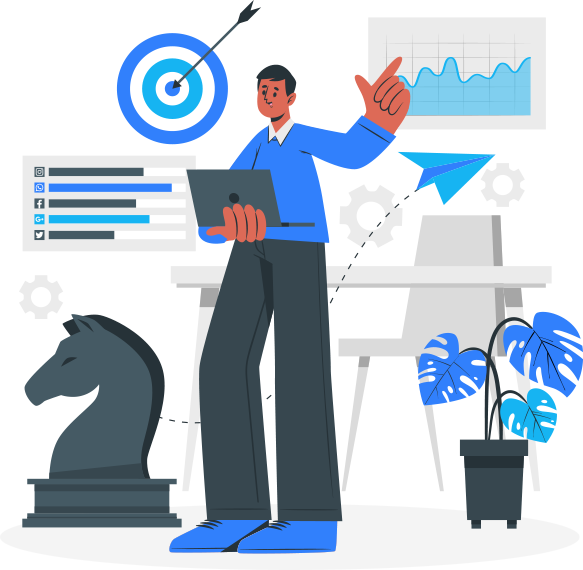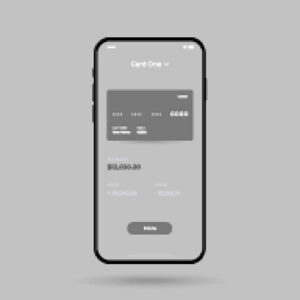Web Design & Deveopment
We are Affordable
Website Design and
Development agency
8 Years Of Experience In Website Design & Development
Website Development: A Comprehensive Guide
Website development is a multifaceted process that involves various stages, from planning and design to deployment and maintenance. In today’s digital age, having a well-developed website is crucial for businesses and individuals alike. This guide will explore the essential aspects of website development, ensuring you have a solid foundation to create an effective online presence.
- Responsive Website Design
- User Experience Design
- CMS and e-Commerce Integration
- Website Content Strategy
- Cross Browser and Platform Testing
- Responsive Website Design
- Usability and Competition Analysis
Understanding Website Development
Website development encompasses all the tasks involved in creating a website. This includes web design, content creation, client-side/server-side scripting, and network security configuration. The process can be broken down into two main categories:
Front-End Development: This refers to the visual aspects of a website that users interact with directly. It involves HTML, CSS, and JavaScript to create a responsive and engaging user interface.
Back-End Development: This involves server-side programming, databases, and application logic. Back-end developers work with languages like PHP, Python, Ruby, and frameworks such as Node.js to ensure the website functions correctly behind the scenes.


Planning Your Website
Before diving into development, it’s essential to plan your website effectively. Here are some key steps:
Define Your Goals: Determine the primary purpose of your website. Is it to sell products, provide information, or showcase a portfolio? Clear goals will guide your design and content decisions.
Identify Your Target Audience: Understanding who your audience is will help tailor your content and design to meet their needs and preferences.
Create a Sitemap: A sitemap outlines the structure of your website, including the main pages and subpages. This helps in organizing content and ensuring a logical flow.
Designing Your Website
The design phase is crucial for creating an appealing and user-friendly website. Consider the following elements:
User Experience (UX): Focus on creating a seamless experience for users. This includes intuitive navigation, fast loading times, and mobile responsiveness.
Visual Design: Choose a color scheme, typography, and layout that align with your brand identity. Consistency in design elements enhances recognition and trust.
Accessibility: Ensure your website is accessible to all users, including those with disabilities. Use alt text for images, proper heading structures, and ensure compatibility with screen readers.


Developing Your Website
Once the design is finalized, it’s time to start the development process:
Choose a Development Platform: Depending on your needs, you can opt for content management systems (CMS) like WordPress, Joomla, or custom development using frameworks like React or Angular.
Implement Responsive Design: Ensure your website looks great on all devices, from desktops to smartphones. Use flexible grids and media queries to adapt your layout.
Optimize for SEO: Incorporate SEO best practices during development. Use relevant keywords, optimize meta tags, and ensure fast loading speeds to improve search engine visibility.
Testing and Launching
Before launching your website, thorough testing is essential:
Functionality Testing: Check all links, forms, and interactive elements to ensure they work correctly.
Cross-Browser Testing: Test your website on different browsers (Chrome, Firefox, Safari) to ensure consistent performance.
Performance Testing: Use tools like Google PageSpeed Insights to analyze loading times and identify areas for improvement.
Once testing is complete, you can launch your website. Promote it through social media, email marketing, and other channels to attract visitors.


Maintenance and Updates
Website development doesn’t end at launch. Regular maintenance is crucial for keeping your site secure and up-to-date:
Content Updates: Regularly add new content to keep your audience engaged and improve SEO.
Security Checks: Implement security measures, such as SSL certificates and regular backups, to protect your site from threats.
Performance Monitoring: Use analytics tools to track user behavior and website performance. This data can inform future updates and improvements.
Conclusion
Website development is an ongoing process that requires careful planning, design, and maintenance. By following these guidelines, you can create a website that not only meets your goals but also provides a positive experience for your users. Whether you’re a business owner, a freelancer, or an aspiring developer, understanding the fundamentals of website development is essential in today’s digital landscape.



Years Of Experience
Asked Questions about Website Design
Fortunately, we aren’t just designers and developers here we are writer strategists, techs and creatives working towards the same end goal our client’s success. As a full-service digital marketing agency
Fortunately, we aren’t just designers and developers here we are writer strategists, techs and creatives working towards the same end goal our client’s success. As a full-service digital marketing agency
Fortunately, we aren’t just designers and developers here we are writer strategists, techs and creatives working towards the same end goal our client’s success. As a full-service digital marketing agency
Fortunately, we aren’t just designers and developers here we are writer strategists, techs and creatives working towards the same end goal our client’s success. As a full-service digital marketing agency






